Eco-Friendly Kitchen Sponges
The cost of good dishwashing scrubbers are steep one at times, but with these alternative kitchen sponges, you’ll never have to worry about that cost.
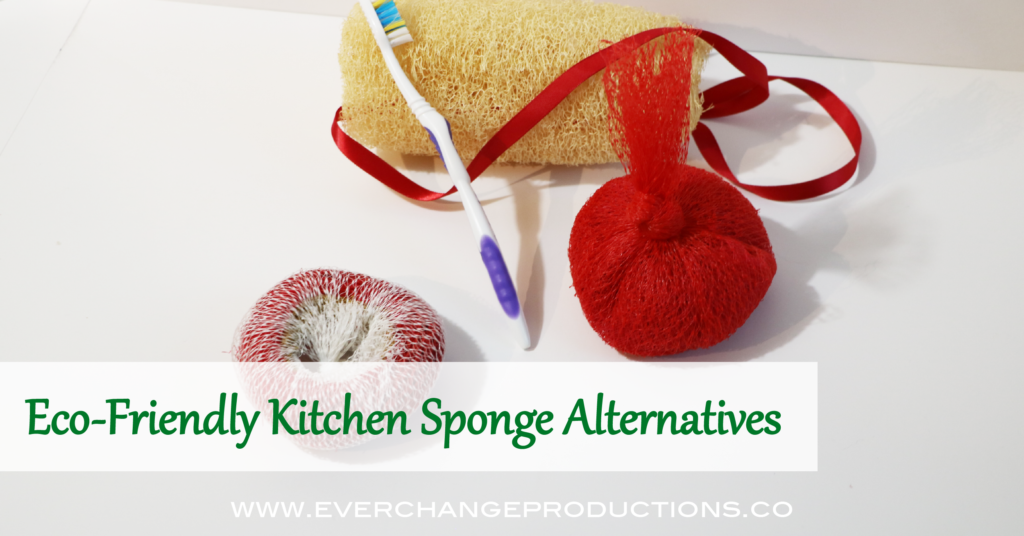 This post contains affiliate links
This post contains affiliate links
Make Zero Waste Dishwashing Scrubbers
Upcycled Mesh Produce Bags
I love happy accidents in upcycling adventures and this eco-friendly alternatives for dishwashing scrubbers is one of my favorites. I don’t have a dish washer in my apartment and sometimes getting my dishes clean is a real struggle. Until about a year ago, I was stuck buying sponges, scrubbing pads and sometimes even a copper SOS pad. Not anymore. One day, I was out of just about everything and I really needed to get a pan clean so I could get to work. The regular sponge wasn’t working and I was out of everything with a scratchier surface. I saw a mesh produce bag lying on the counter and I just grabbed it and hoped for the best. Seriously, there’s nothing I can’t get off with these eco-friendly dishwashing scrubbers.
At first, I didn’t mess with trying to make it look cute, instead I just hung it around the sink. Then I saw this super cute scrubbie tutorial and decided to give it a try. I decided to slightly modify it because I had some different fruit nets I wanted to use up. Check out the tutorial below.
Step 1: Cut off the ends
It’s best if the nets are opened from the ends because it will give you more material to work with.
Step 2: Roll Them Up
This is where I started slightly modify the previous tutorial. My nets were small and loose, while hers could be more tightly rolled.
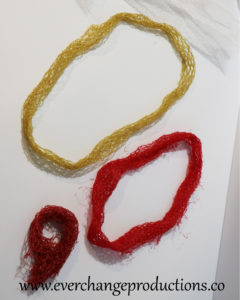
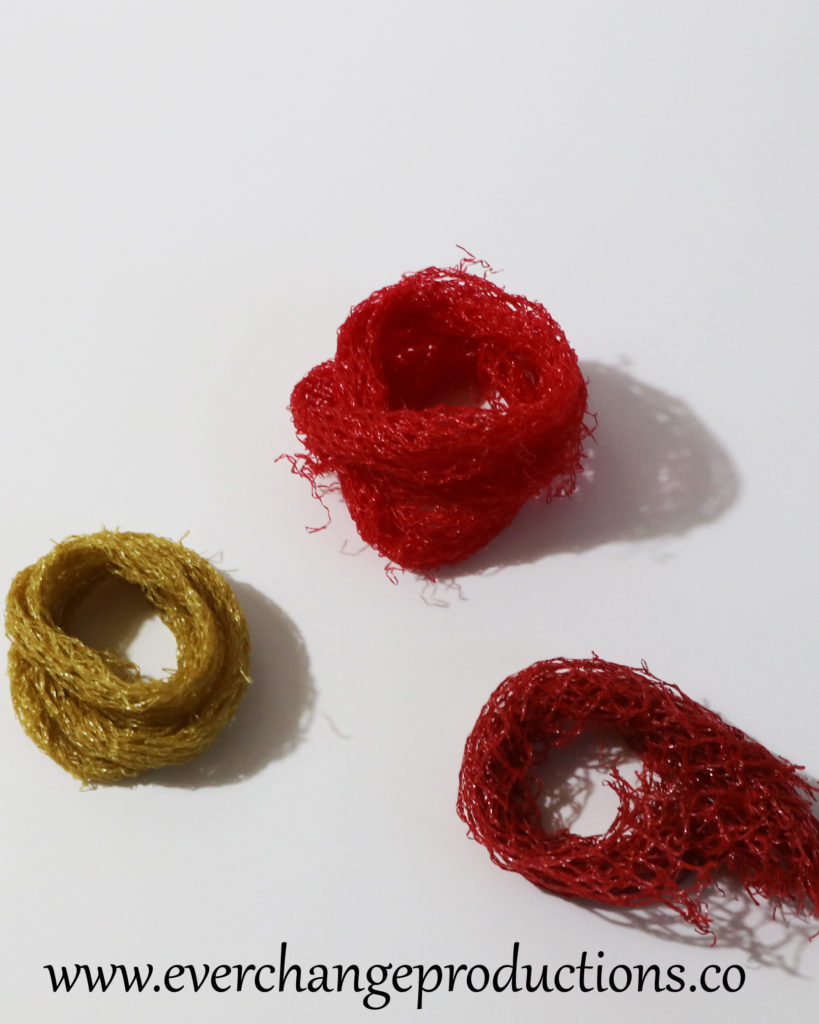
Step 4: Fill the Exterior Net
First, push the exterior net up through the holes of the three interior nets. Leave just enough at the end to wrap around the three wrapped nets.
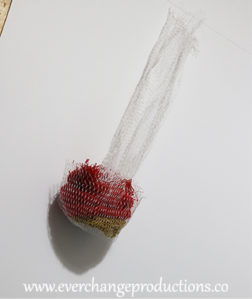
Step 5: Wrap It Up
Pull the interior around the outside of the bags and then up through the middle. Wrap the exterior bags around until you get the end.
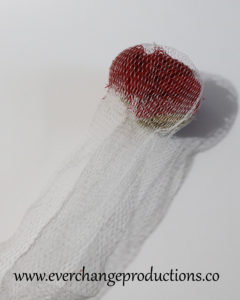
Step 6: Tie a Knot
Once you’ve wrapped the exterior net as many time as you can, tie a knot in the end to hold it all together.
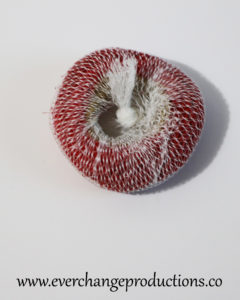
And there you have it! Practically free, eco-friendly dishwashing scrubbers! You can see in the picture below how easy it is to clean your pans with this fruit net scrubbie. You’ll never have to waste money on kitchen sponges again!
See the tutorial in action with this video!
Swedish Dishcloth
After this post was originally published, the outreach manager at Swedish Wholesale contacted me about doing a review of their Swedish dishcloths for my paper towel alternatives post. I’m always interested in finding new sustainable products, so I jumped at the chance to check out these cellulose sponges! Although, they’re super absorbent, making them great paper towels, I also thought they were great for washing dishes, so I decided to add a section about them here.
My favorite aspect of the Swedish Dishcloth is they’re made from 70 percent biodegradable cellulose and 30 percent all natural cotton materials. This means they’re not only more absorbent than a traditional cotton dishcloth, but they’re going to last longer too!
Cellulose Sponges vs Conventional Sponges
I’ve always had a difficult time parting with the conventional sponge. I do love the fruit net scrubbies or luffas for those tough dishes, but I always liked the way the sponge felt in my hand. No matter how hard I’ve tried to keep luffas and fruit net scrubbies around, I always ended up with a sponge because they were easy to buy at the store when I was out getting other things. The only problem was grease and oil because no matter how much soap I used, those dishes just never seemed clean. However, Swedish dishcloths were a game changer.
Not only are they not plastic-based, so they’re able to degrease dishes, but also they have a slightly scratchier surface than a sponge. They’re smaller than a regular wash cloth, so they fit in my hand better.
They’re also more hygienic than sponges and rags because they dry quickly, giving bacteria less time to grow, but they’re also washing machine safe. You can use them over and over again and when they need a cleaning, just throw them in the washing machine, so you can use them some more. You can use them to clean or wipe down any surface.
They also have the added benefit of being biodegradable. When you’re done with one, you can toss it in the compost pile or bury it, and it will compost in about 8 weeks.
I hope to update these posts in the next few months to see how they compare in durability. But don’t wait up and get your Swedish dishcloth today from Amazon and you’ll be so glad you did!
Luffas
My whole life I always thought luffas were from the ocean, but actually they’re gourds that grow on a vine. The luffa vines are prolific. For just the cost of a packet of seeds, you can grow enough luffas to serve as eco-friendly dish scrubbers for quite some time.
Check out this informative post about how to grow your own luffas.
You’ll have more luffas then you’ll know what to do with, so see more unbelievable ways to use them here.
Plastic Bags
Once I discovered the beauty of mesh produce bag scrubbers, this was kind of the next step. This requires some crocheting and plarn making, which is why I prefer the mesh produce bag method, but in a mesh bagless bind, this looks perfectly fine. To learn how to make plarn (plastic yarn), check out my tutorial here.
Once you’ve got your plarn ready, you can check out this simple eco-friendly dish scrubber pattern here.
Dish Scrubbers with Handles
Toothbrushes
We all have one of these lying around from time to time. Although there’s always that certain point where we should stop putting them in our mouth, there is still one last use for them. They make great eco-friendly dish scrubbers, especially if there’s a hard to reach spot.
Check out these pages for more zero waste, DIY or upcycling ideas.
Don’t forget to pin this project for later!
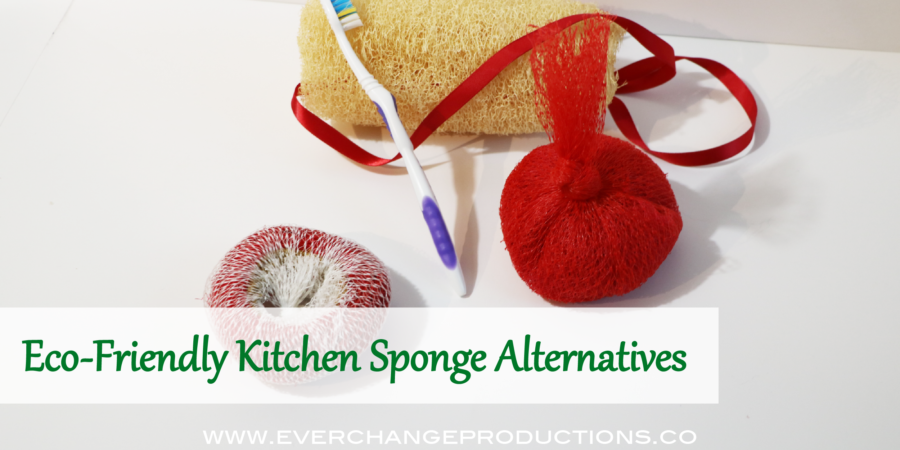
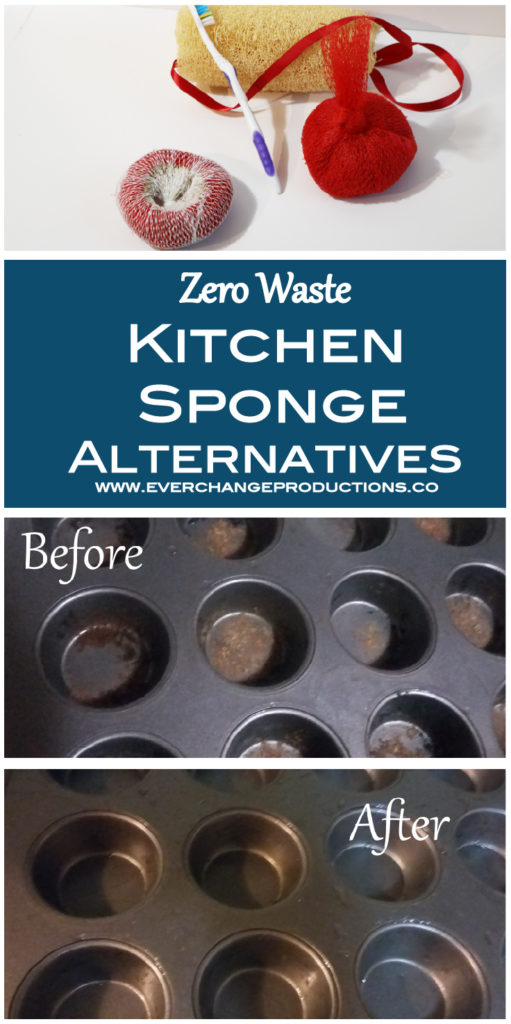
These are great, so smart!
This is a nice round-up of ideas! I have to admit I’m a little squeamish at the thought of cleaning dishes with a toothbrush I no longer want to put in my mouth…but if you then re-wash the dish with your dishcloth, it’s probably clean enough, and maybe I’m just being silly.
Another use for mesh produce bags is to make a Soap Saver.
Lol, yeah definitely disinfected the toothbrush first. Thanks for the mesh product bag idea!
I wouldn’t have thought to use those as dish scrubbers but I bet they work great! I also didn’t know that luffas were from the garden like you I thought they were from the sea. Thanks for sharing on the Waste Less Wednesday blog hop.
Thanks for stopping by!
What a great idea! Those plastic mesh bags are such a bane. I like to buy the bulk fruit, but hate getting the useless plastic with them!
I’m glad you found it helpful!
I love using old toothbrushes to get in all those nooks and crannies! I also always have those mesh bags around the house and end up throwing them out, definitely going to try making my own dish scrubber!
Woo hoo! Let me know how it goes!
Great ideas! I use tooth brushes for all kinds of cleaning.
Thanks! That’s awesome!
What a great way to reuse something that would just end up in the rubbish! #GoingGreenLinky
Thank you!
Very handy ideas. I will give these a go! Thanks for sharing with the #goinggreenlinky. Pinning this for later!
Thanks, Leah!
I LOVE the mesh bag idea!!! I’ve got to try that!
Awesome!
I already use toothbrushes for cleaning and now I am going to try those dish scrubbers as I do end up with a few plastic mesh bags (they are also great for storing garden produce through the winter mind you!) I also wonder if it would be warm enough here to grow a luffa – I may give them a go in the polytunnel next year!
Thank you so much for linking up to #GoingGreen and I hope you’ll pop over for the next one which opens on July 3rd 💚
That’s awesome! Let me know how it goes and if you end up growing any luffas!
I love your ideas. I love using the mesh scrubber – to me they work better than any other scrubber I have ever used and you really can’t buy them in the stores. I love using old toothbrushes too – they work great for the tiny little cracks that dirt and grime hide in. Thanks for provided these directions on how to make them. Congratulations on being featured on #GoingGreenLinky. Pinned & tweeted. Have a healthy, happy & blessed day!
Thanks so much! Toothbrushes are perfect for those hard to reach places. Thanks for stopping by!
I just have to share my idea to save your citrus fruit, before you find them going bad in fridge. I get the juice out, put juice ( e.g. lemon ) in ice cube trays, freeze, remove to zip lock bag for baking, hot lemon juice, etc. I put orange juice in previous little apple sauce tubs ( just right for morning juice.)
That’s a great idea-thanks for sharing!